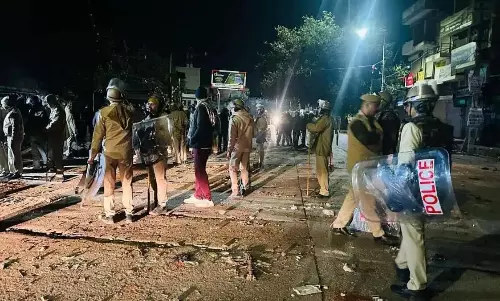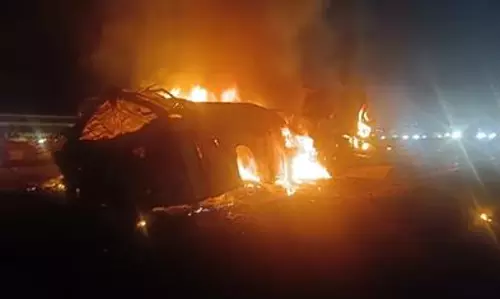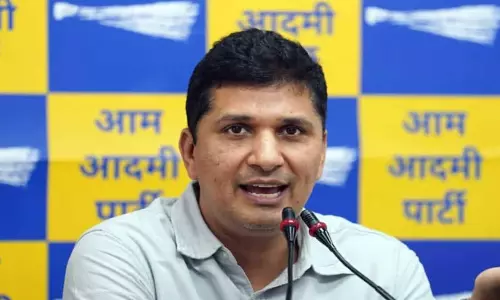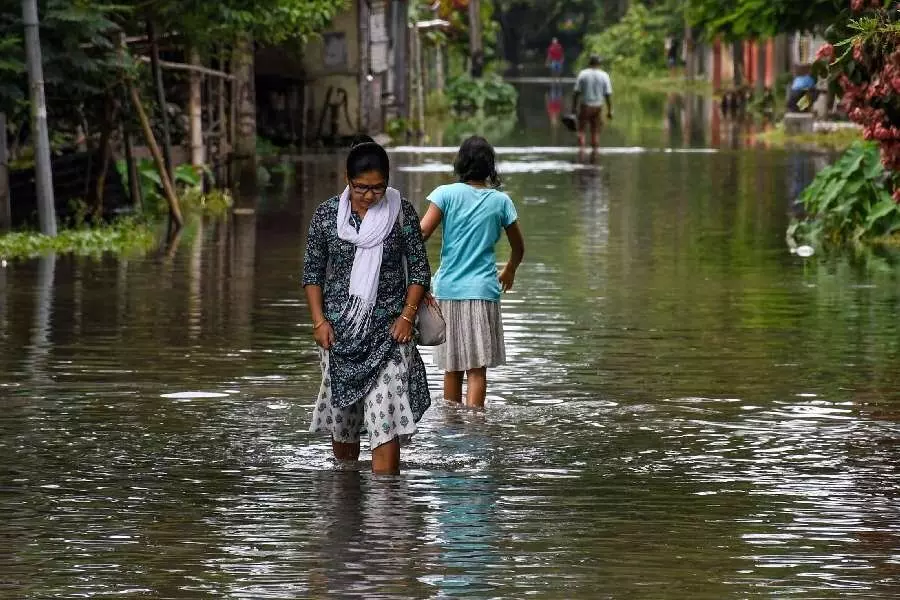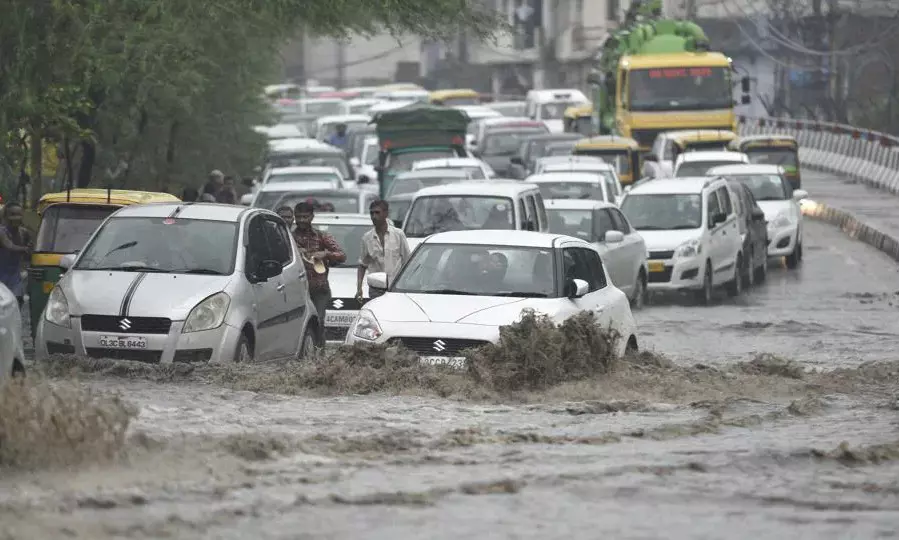
Nature's fury; human vanity
text_fieldsUntimely and erratic, yet torrential rains have turned people's lives upside down in northern India. More than one and a half dozen people lost their livesin the rains over two days. The last few days have recorded the heaviest rainfall in Delhi in the last four decades. According to the Meteorological Department, India received 81 percent of the normal rainfall on Sunday. Delhi, Chandigarh, Haryana and Jammu and Kashmir received nine times the normal rain on Sunday. Himachal Pradesh, which received 104 mm of rain, received 13 times more rain and Punjab 12 times last day. With more rain expected in the next two days, there is a threat that north India may witness severe floods. Already, many vehicles were swept away in the national capital where roads turned into rivers. Himachal and Uttarakhand are in fear of landslides. In Haryana, the fear of floods has increased as overflowing dams may have to be opened. State governments are busy devising measures to prevent the spread of monsoon and post-monsoon epidemics and to relocate people to safer places.
Experience in the capital city of New Delhi proves that despite early warnings about untimely rains, the failure to make preparations to deal with it has worsened the situation. Abundant rainfall has been the feature there for the past several seasons. If it rains for two days, the city is usually inundated with water. But at every stage, while the country is submerged in water, the ruling leadership escapes by blaming and arguing with each other. Governments from the local to the central level fail to solve the problem, not to speak of making the existing drainage and sewage systems efficient. The central government is in a hurry to complete the Central Vista project and renovate the face of the capital. The Aam Aadmi government in Delhi, on the other hand, is trying to escape by pointing the finger at the BJP's local administration for the city's infrastructure, which is under water, including the road to Public Works Minister Atishi Singh's house. When the rulers in their rush to hold on to power and to expand its reach, end up in disaster, what can one do but face such calamities!
How can we expect a positive response to climate change warnings from governments which are not ready to take basic action in the face of climate change? The floods caused by the heavy downpour that started last weekend in the northeastern states, the floods in Rajasthan due to Cyclone Biparjoy, the floods and waterlogging in many parts of Tamil Nadu, and in parallel the death toll in the states of UP, Bihar and Odisha due to the heat wave that reached 120 - no crisis caused by extreme climate change can be said to have come unexpectedly. The authorities concerned have been giving warnings about the consequences which may be more fatal and serious. Environmental experts and voluntary organizations keep constantly alerting the government on this issue. This year, Rajasthan and Gujarat have seen a 200 percent increase in rainfall over the normal, but the above-mentioned states, which are experiencing extreme temperatures, have seen a 90 percent decrease in rainfall, according to the Meteorological Department. India consists of three main regions that reflect climate change, namely the Himalayan ranges, the coastal regions, and the sub-humid and semi-arid regions. India is a country that is used to experiencing natural calamities every year such as incessant heavy rainfall in mountainous and coastal areas, irregular variations in sea level, and the possibility of unusual phenomena such as cyclones, and tropical cyclones in arid regions. The disasters caused there by climate change will be terrible. Rain is the lifeblood of India, Asia's third largest economy. If it arrives at the wrong time, if it turns into a flood, or if it turns into excess rain, it will affect our seed, harvest, granaries and treasury. Governments have the primary responsibility to recognize this and devise ways to avoid the ill-effects of climate change. Instead of taking care of it, the government, and a section of people behind it, are trying to provoke nature by exploiting it to the utmost. Even in the political issues of our country, there are interests of corporates to exploit nature and get rich. Such vested interests and unholy alliances underlie the ongoing state interventions in Jammu and Kashmir and Manipur to alter land tenure and population distribution; and these are not mere allegations. Governments fail to execute long-term prevention programs to avert such disasters and to take immediate measures to deal with the ones that have occurred. How can humans escape nature's revenge when it turns out that any violence can be done to destroy nature and earth's resources? What gets swept away in this deluge is also the ego of the people that they can stand firm on the strength of violence.






